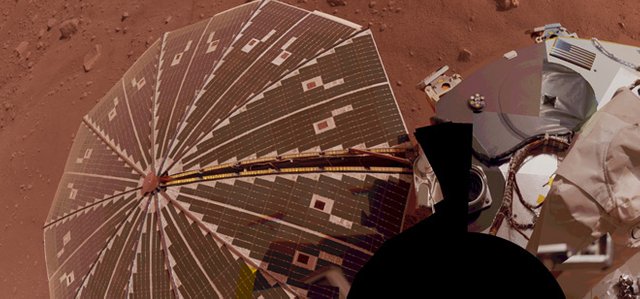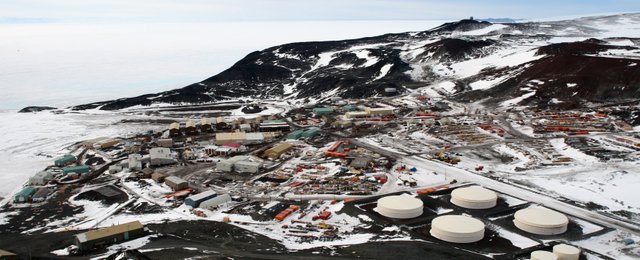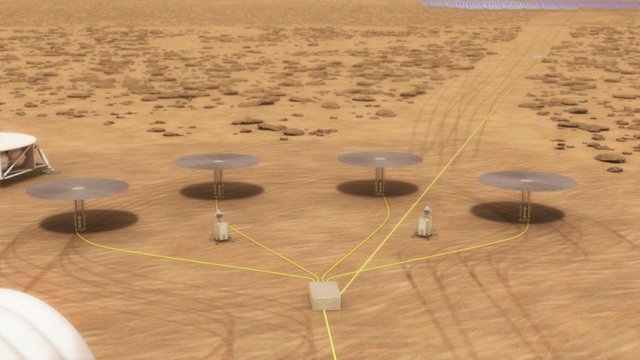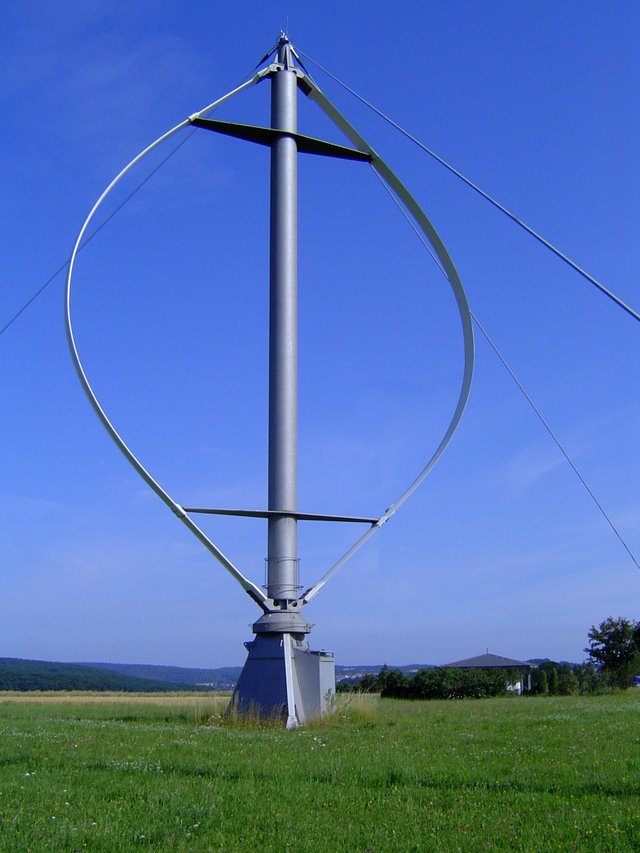Energy Production for our MARS colony - Colonization of MARS Series
Using the available studies I will uncover the science facts about producing energy IN-SITU (on the surface of Mars). We have talked about the science of producing air, water, fuel and about the techonology of getting there in the first place.
My goal is to create an easy to read Mars Colonization Handbook, something that I didn't see anywhere online and to have fun doing so, because science is full of fun and always ready to make you wonder about how everything works.

Can't we use Solar Energy?
Solar power is the safest and cheapest way of making energy on Mars right now. The technology already exists and is light enough to be shipped to Mars, at least in the beginning.
But Mars is further away from the Sun than the Earth so the Sun has less power there, 56% less to be exact. That being said, a photovoltaic solar panel only manages to convert a little over 20% of the energy received. Even if we assume that money will be no issue and we can use the latest researched photovoltaic panels, which in remote tests work up to 40% efficiency this is still a problem. This is due to the large mass of such a system, including motors to always keep it pointed to the sun, controllers, the effect of fine mineral dust which would deposit which if not removed correctly could cause a matifying of the glass or of the protective cell raisin itself, resulting in reduced solar power output.
This solar power coefficient (without regarding the atmosphere) is called Solar Irradiance and can be calculated by the formula:

I don't want to go into very technical details about the formula but this Solar Irradiance changes according to many variables like:
- orbital eccentricity - seasonal changes in distance - much more pronounced than the Earth's seasons.
- inclination of the planet (obliquity)
- dust suspended in the atmosphere
- time of day
- weathter - since photovoltaic panels work best at specific temperatures
If only we would have a research base somewhere in a very cold area to estimate power consumption over a long period of time and the necessary provisions that it needs...but wait that's exactly what McMurdo Antarctic base is all about after all. Capable of supporting up to 1258 residents in its 85 buildings, it is working non-stop thru the winters which are just a little better than what Mars is capable in Gale Crater, where we have a lot of measurements from.

McMurdo Antarctic Station, Wikimedia commons.
Math time! Yay!
McMurdo base used less and less energy lately due to better and more efficient technology and equipment and is currently powered by Three Enercon E-33 ( 330 kW each)1 with a few diesel backups.
This means almost 1000 kW and we don't need advanced life support or water generation on Earth. Let's presume that the energy needed on Mars should be at least an order of magnitude more (10 times).
By taking the average efficiency of 30% of a superior solar panel and using the above Solar Irradiance formula to find out the light flux on the panels we can do the following calculation to find out the area of the solar panels needed to cover the energy need:
E=AϵFrp
Where:
E is energy output of the solar panels, which we presume it would need to be 10000 kW
A is the size of the solar panel (basically an area of the required solar panels)
ϵ is the efficiency of the solar panels ( 20-35% is common with some future solar panels up to 38-40%)
F is the solar flux intake, which may vary winter to summer so the lowest value should be used.
rp is the performance ratio, which is affected by dust on the panel or dust in the atmosphere, clouds and other electronic factors. A ratio of 25-30% is common, especially when corroborating with the data from the 1.3 Martian year study from Viking.
After we solve the equation with the known parameters we end up with the solar panel total surface of 300000 m2 or 0.3 km2(0.11 mi2).
Wait, what?
This is not the surface to be covered by the solar panels but the size of a continuous solar panel, so this would translate into an even bigger surface to actually cover. While indeed we could guarantee that the solar panels are dust free and use better efficiency panels and place the colony somewhere to guarantee the best solar yield, this calculation still makes the solar panel field bigger than the colony itself. We need to think of alternatives or at least concurrent systems.
Is wind an alternative?
Wind is the motion of the atmospherical gasses which is caused by their heating by the sun. Usually the windspeed is zero at the surface but it rises with height. The common height at which a wind turbine would be most effective on Mars is 20 meters which has a corresponding wind velocity of 25 m/s. According to a study made by the Univesity of Houston into the subject, such a turbine should be placed on the slopes of large volcanoes or generally in low angle but long distance slopes. Their findings even surpass the initial estimates, putting the wind speed at close to 33 m/s at the 25 meter height mark. Data from Viking lander was used in the simulations and additional research should be done to determine if craters edge installation could also benefit from an increase in wind velocity.
The design of the wind turbine will be nothing like on Earth, because we already know that the Martian air density is only 0.013 that of the Earth. We can use the power formula
(ρ is the air density, A is the area and V is the windspeed) to calculate the power density for a given speed but we must take into account the fact that because of the reduced air density the wind speeds are equivalent to much lower speeds on Earth. A 25 m/s velocity there is only equivalent to a 6 m/s of Earth wind speed velocity in terms of actual yield and that is even more reduced by the fact that not all that energy is converted to useful energy.
The design of the Martian Wind Turbine
Because of the space limitations and size constraints on both the turbine and their local assembly mode, the lift turbine is the most promising design, but it will need to operate at higher speeds than the usual drag type turbines that are prevalent here on Earth. To operate on the previously calculated 25 m/s wind, it would give us a calculated 28 kW per turbine but because of the reduced air density, the blades would need to be almost 1.5 times the length of the turbines on Earth. And the power output would only be 10% of the output of the save device on Earth.
Another mention regarding the design is that due to the reduced gravity and the reduced force of the winds, the central mast can be made of very light materials and the blades could even be made of inflatable materials. Thus keeping the launch mass to a minimum, since we would need about 360 of these turbines to power a colony of the same size as McMurdo in the Antarctic.
What about nuclear power? Can it supply the power we need and could we transport it there?
Following the NASA fission reactor produced in the 1960's, codename SNAP, which was subsequently used in most of the rovers and space probes since, new research into the field may uncover a next generation of reactors, used primarily for human expeditions and intensive power demand. SNAP was used on robotic probes that were not power hungry and they would not need to move fast. What does the science say?
In 2008, according to their newsfeed, NASA published their solution of building an outpost based fission reactor to use on the surface of the Moon, buried under a shallow lunar soil. The nuclear engines would convert heat energy into electricity and two huge radiators would dissipate the excess heat. The system was rated at a steady 40kW, which means that no dust storm or lack of wind would affect the power generation.
According to newer studies, much more power can be harvested from such reactors, with the radioactivity levels decreasing and safety increasing much more than compared to the SNAP we talked about earlier.
The latest NASA study in the field, published in November 2017 and updated in 2018 presents us with a number of new features and an improved reactor process.

NASA depiction of a field of Fission Reactors that would power a Mars Base.
The old reactors were radioisotope thermoelectric generators (RTGs), like the ones on the Mars Rovers, which use the decay temperature difference across different alloys to create a voltage but use no moving parts.
The new reactors use atom fission (splitting of the atom) to drive piston-based Stirling converters, much more efficient than RTGs. This makes the new reactor capable of producing between 1 and 10 kW for 10 years ore more.
The most important thing is that the technology is scalable up to a few megawatts, and where the scalability ends, the use of parallel reactor generation could be used, making their construction cheaper and their deployment very ease to manage.
I won't add much more here since NASA has just put together a small video for us:
Using more than one solution might be key
Of course that the best bet would be to use more than one solution, in parallel. The solar panels will be the safest method that will deliver the energy to the batteries and the wind turbines will work to enhance and offer a backup to the system. When the storms cover the sky or the wind slows down, as a third backup and a steady source of energy for the vital systems like life support ( oxygen generation, fuel and mining operations) we could use the Fission Reactors.
Conclusions
Power generation for our colony is very possible even using our existing systems. We just have to adapt them to the environment, fine tune them and find a way to ship them there. The first human missions will definitely work towards this goal with an unprecedented speed over the rovers. Providing clean and sufficient energy will be the key for developing the other ISRU operations that will become the foothold of our future Mars missions.
By having and producing the basic life support in-situ ( on the surface) we can make room on the rockets for more infrastructure cargo or even paving the way for further experiments on the surface. Like growing our food locally, which will be the subject of the next article.
Additional sources for ideas and further reading: http://ccar.colorado.edu/asen5050/projects/projects_2001/benoit/solar_irradiance_on_mars.htmhttps://en.wikipedia.org/wiki/KRUSTY https://mars.nasa.gov/msl/mission/rover/energy/ https://sites.google.com/site/andreisustainability/energy-sources https://www.nasa.gov/press-release/langley/nasa-seeking-big-ideas-for-solar-power-on-mars






Immagine CC0 Creative Commons, si ringrazia @mrazura per il logo ITASTEM.
CLICK HERE AND VOTE FOR DAVINCI.WITNESS
Thanks a lot! That's a humbling venture. I wish you luck and I will visit you and promote the good content on your blog.
Hi @alexdory!
Really liked your article, it's a good split between technicalities and easy-to-understand knowledge.
Looking forward to read more!
Thanks a lot!
I hope I am able to keep it like this.
I think that one day Mars will be more inhabitable for man than earth one day.But my fear is that are we not going to destroy it just same we did to mother Earth?.Or this Mars is has it own properties that may resist human activities capable of destroying it.👍 @alexdory
Who knows what will happen, but for now it will be used by scientists and people who share our conservation ideas. I think that an enlightenment will slowly happen to us as a whole.
Nuclear reactors powering Stirling engines, imagine that. I think that's the way to go.
Though I like how simple RTG's are. You just get a lump of hot radioactive material and power everything with that. No moving parts and nothing to break, unlike wind turbines. The Russians even used them to power lighthouses.
Another good article. And I like the Handbook idea!
Thanks a lot! I also loved the idea of RTG's when I first found out about them. It was close to Spirit and Opportunity I think. They were having some troubles with the energy and an RTG would have been a good boost. I followed both of them live almost everyday for the first few months :)
I was younger and Facebook and 9gag weren't online yet :P
It's quite amazing that Opportunity is still active after all these years.
Very good engineering. They weren't expecting it :)
They had to flip over to assure funding all these years.
Really good work! I m an Italian boy of the team Davinci.witness and I follow you with pleasure. @giornalista
Grazie :P
Great post. Looks like the nuclear fission reactor will be operational "soon" ^^.
Maybe you could share the posts from this series on the Asgardian forum, it might interest them :)
I will check into their forum. It has eluded me so far, thanks! :P
Thank you for this education. Good work.
Thanks!
Tip: add a description for your account. Might bring more followers for you.
It would be really interesting to see scientists and technologists alike merge these somewhat feasible ideas together to produce vast amounts of a really super-efficient and super-effective means of sufficient energy supply on our red twin planet while factoring in parameters like cost effectiveness, sustainability, cleanliness and several others. It would be fascinating to say the least!
It already is. I am sure Musk has an advanced version of my handbook made by Stephen Petranek :D
He already knows it's "easy" this is what he did with Tesla. He took available technology that was just being put on hold by the big players, developed it a bit and then implemented it. This is what he does with The Boring Company. Finds a niche and exploits it. So I hope that we will get there soon!
And get there soon we shall! :)
Congratulations! This post has been upvoted from the communal account, @minnowsupport, by alexdory from the Minnow Support Project. It's a witness project run by aggroed, ausbitbank, teamsteem, theprophet0, someguy123, neoxian, followbtcnews, and netuoso. The goal is to help Steemit grow by supporting Minnows. Please find us at the Peace, Abundance, and Liberty Network (PALnet) Discord Channel. It's a completely public and open space to all members of the Steemit community who voluntarily choose to be there.
If you would like to delegate to the Minnow Support Project you can do so by clicking on the following links: 50SP, 100SP, 250SP, 500SP, 1000SP, 5000SP.
Be sure to leave at least 50SP undelegated on your account.
Musing on science and tech is brain candy! This is a fun layout of possibilities for energizing Mars!